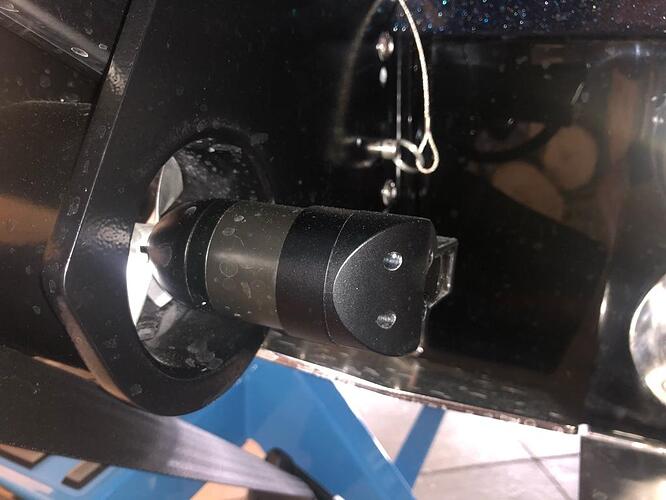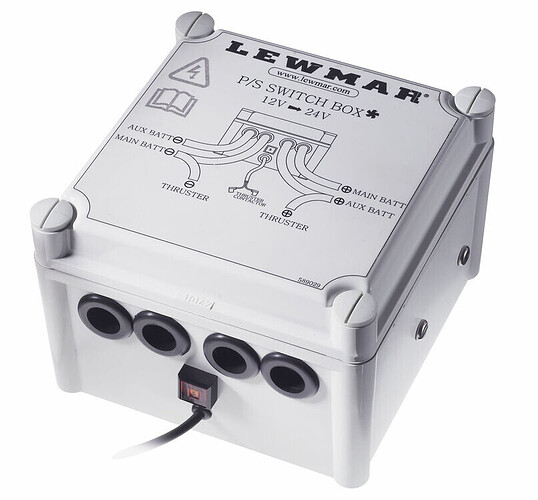Here’s a closer look at the motor they are using:
something like these
I actually have that one sitting in my office it’s waaaay bigger than it looks in the photos and won’t work.
Does the thruster run without the main motor running? If not then I bet they using a converter to boost the voltage for those motors.
*I have just found out they are running the thrusters at 24V
And here it is…
https://www.amazon.co.uk/Dilwe-Underwater-Propeller-Waterproof-Brushless/dp/B07S23LN48
Man that does look really close doesn’t it! Thrust seems low for the application though no?
Probably a smaller version…
But if you scour the net for 24V thrusters you might find the right one.
That’s what I’ve been doing that brought me here actually.
I don’t think they allow the thruster to run without the motor running no.
My thought was a 12V to 50V booster but I can’t find one with enough umph to do this job.
Alternators does not charge that much at idle, at least leisure boat bow thrusters can usually be used without main engine running(usage is anyway restricted to short periods only) . One of the challenge using a direct drive is the gearing. Even at 100kv and 24 you will have much more rpm than you need to…the “target” speed is extremely low in this application, so to work well the pitch of the prop need to be much much less than on a e foil.
In their video about the thruster Supra say that they are running it at 24V.
I’ve found a few potential motor motors that may work at 24V.
The question is now how to get 24V in the boat while still using the 12v alternator to charge the individual batteries and not compromising the 12V systems.
That’s very cool haven’t seen one ready built like that.
Going back to the lithium battery idea what size battery would I need to power 2 of these guys:
Probably limited to 5 continuous minutes of run time.
I would say you just need a higher KV and run at 12V solves a bunch of problems. What about this?
At 3080kv and 12v doesn’t that yield 40k rpm? Don’t I want a lower RPM?
Sorry I’m still learning how all this works!
Considering insurance and other related safety issues, would not use any DIY (lithium)batteries in my own boat. Think you would be fine with 24 volt max, and that can cheaply and simply be achieved by using 2 car size led acid batteries in series. If want to spend some money, there are also approved 12v lithium packs …You can probably charge them in the marina, so they can be a separate system from the boats default battery pack. Typically the bursts required for bow /stern thrusters are closer to ten seconds than a minute, and you should not need too many bursts to more the boat.
I agree avoiding the lithium is the ideal scenario.
I’m mostly hoping for a recommendation on where to start with motors in the 24v area.
I’m just not well versed in how brushless motors work.
For example I see several motors with plenty of thrust at 50v but what happens if I feed it 24v? Does the thrust go down proportionally or does it go down slightly and amp draw goes up?
How all this work :
Volt and kv = rpm
Max amp ( so motor size) = torque = thrust
Speed= high rpm or big size prop ( and pitch )
For instance : A given 50A motor can give 1100w at 12v , 2200w at 24v …
Bigger motor can run at low rpm and can be made at lower kv and still give enough torque and not to much rpm ( cavitation …)
So aim for the highest voltage , lower kv , motor and prop size according to needs
Boat weight will give you thrust needed
Thanks!
So max amp draw is going to be independent from voltage (or mostly so)
A motor will draw 50a at 12v for half the torque of 50a at 24v and so on so it’s directly proportional to voltage.

